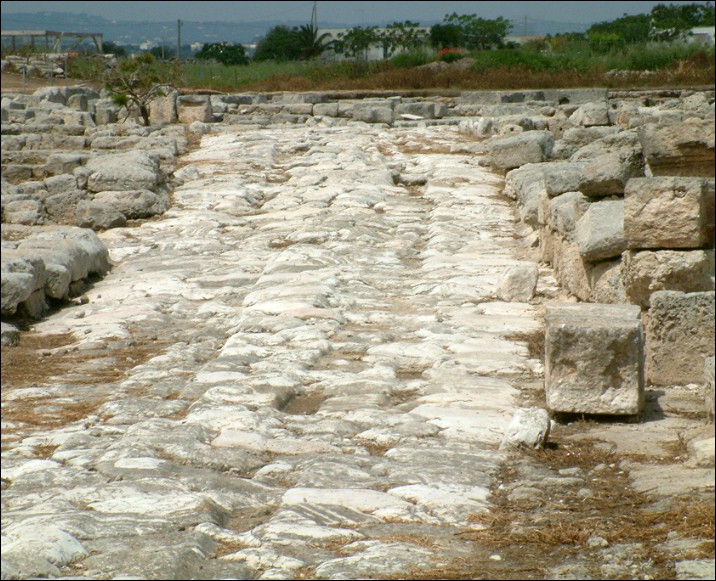EGNAZIA
Situated half way between
Bari and Brindisi, along the Adriatic coast, is where one
can visit the Archaeological Park of Egnazia, representing
a fundamental period for all those interested in learning
about the Messapians: a civilisation which strongly characterised
the culture and history of this part of Puglia during the
Iron Age (12th-6th Century AD).
However, the first nucleus of people settled during the Copper
Age (15th Century AD) but it wasn’t until the 11th Century
with the arrival of the Illyrians from Làpigi, that
the Messapians from Gnathia phase began.
According to history, the Làpigi population who arrived
in Italy during the II Millenium before Christ, gave rise
to three populations characterising three different areas
of Puglia; the Daunii in Gargano, the Peucezi in the area
of Bari and the Messapians in Salento.
In 266 BC, Egnazia was taken by the Romans, as happened with
the entire region, and became civitas foederata during the
III and II Centuries BC. It then became a municipium after
the social clashes phase (88 BC).
During the Imperial Period which initiated with Augusto in
27 BC, Egnazia enjoyed a new period of greatly facilitated
development which began at the start of the II Century after
Christ, through its insertion on the Via Traiana route. This
route lead from Benevento to Brindisi, with an alternative
coastal route running along the ancient Via Appia (Appian
Way).
With the fall of Rome, Egnazia suffered siege and destruction
by the hands of the Visigoths of Alarico (411 AD), the Vandals
who disembarked here on their way from Africa to plunder Rome,
and maybe even by the Ostrogoths of Totila during the Greek-Gothic
War (534-553 AD), who remained until the end of the Ostrogoth
Reign by the hand of the Byzantine General Belisario.
Byzantine domination didn’t resolve the problems, in
that Constantinople only considered Puglia as a marginal part
of the Western Empire. The eternal clashes against the Longobards,
who were present in Northern Puglia, only highlighted this
problem. The Saracens added to the problems of these historical
characters, when they raided and terrorised the population
from the 9th Century until the arrival of the Normans (1050).
Egnazia, which was very vulnerable due to its geographic position,
slowly lost importance and was finally abandoned by its inhabitants,
who then founded Monopoli and Fasano.
One can admire the Necropolis from the Messapians of Gnathia
period, which also presents a tomb decorated with frescoes
and the 7 metres megalithic defensive walls, which extend
for around 2kms around the archaeological site.
From the Roman era instead, there are preserved tracks of
Via Traiana, the Amphitheatre, the Forum, the Civil Basilica,
the hall of the Tre Grazie (Three Graces) and the Shrine of
Eastern Divinities.
From the subsequent period, there are remains of the two Paleochristian
Basilicas.
|
